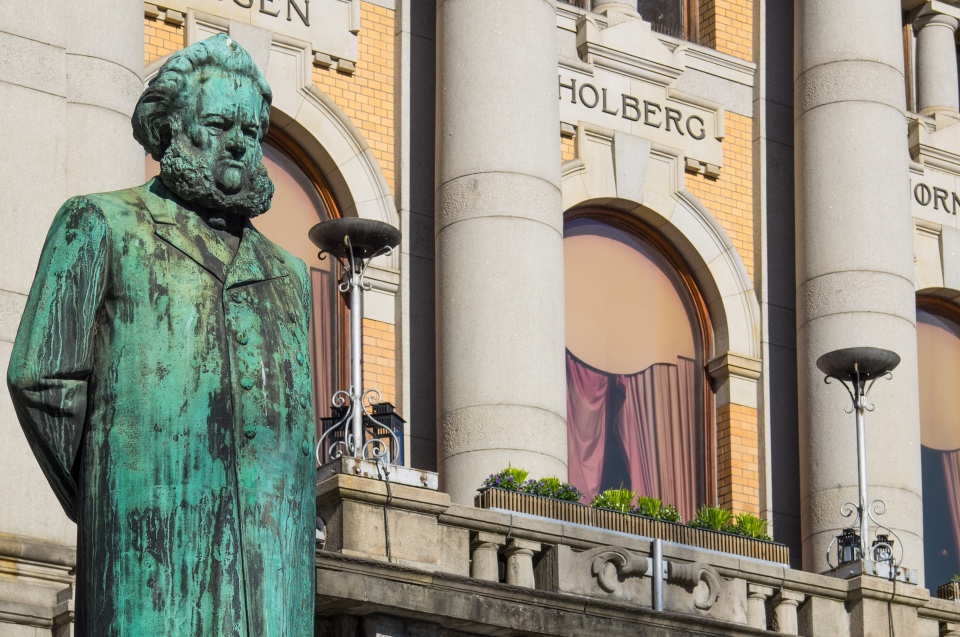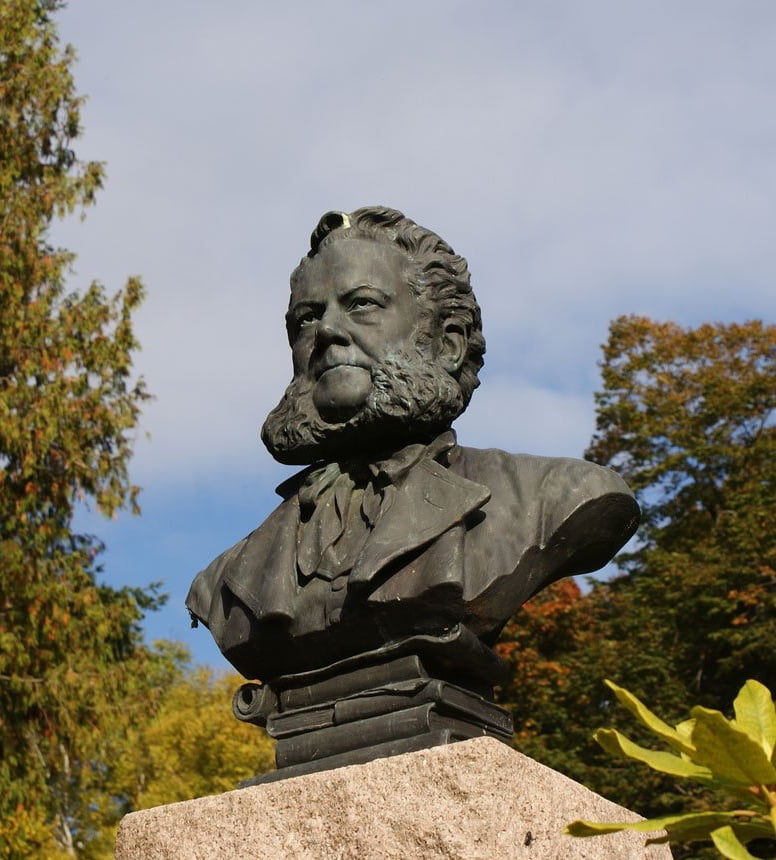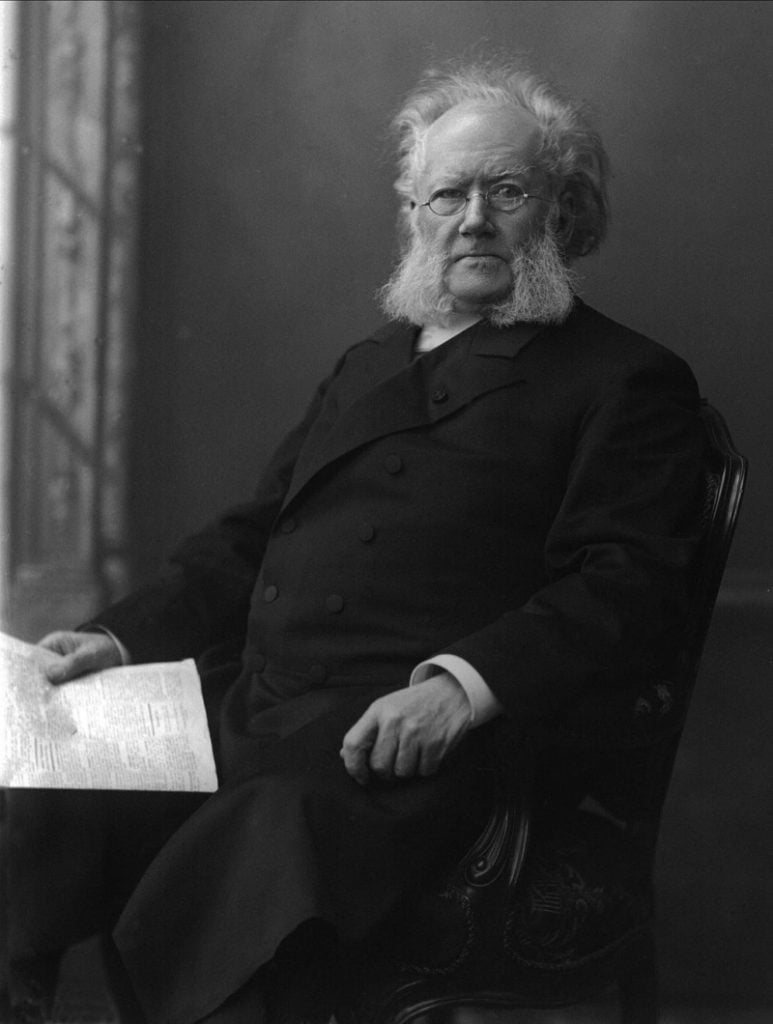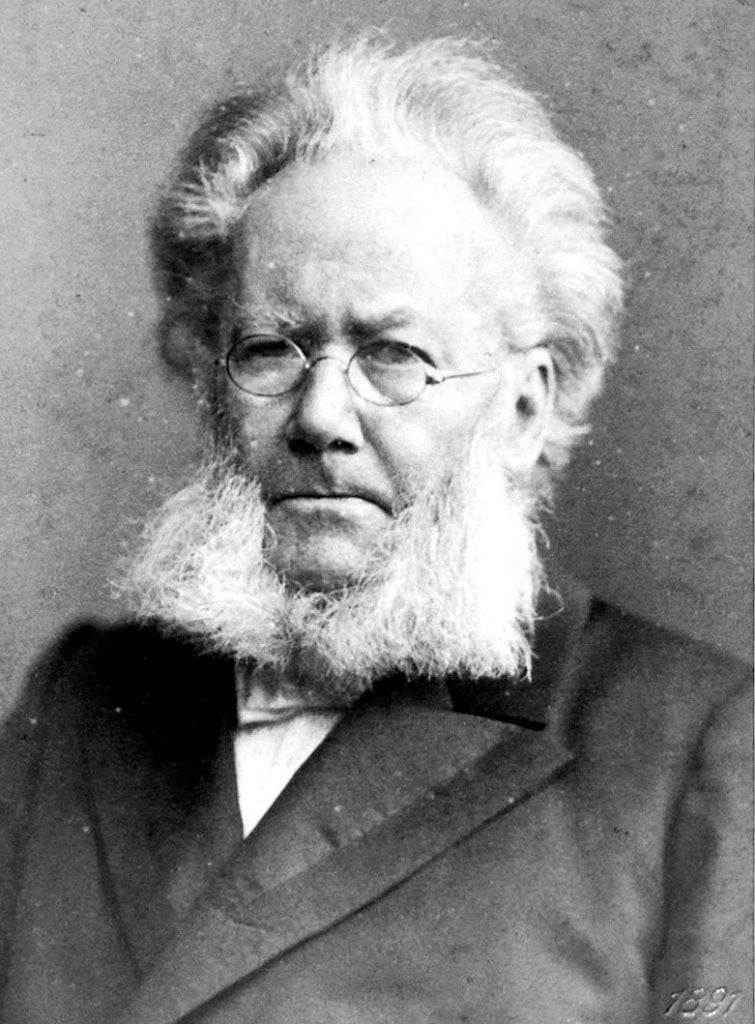One of the world’s most influential playwrights and poets has left a huge legacy on Norwegian culture. Here is the story of one of Norway's most famous sons.
Henrik Ibsen is widely considered to be the world’s second-most famous playwright, behind William Shakespeare. Ibsen wrote lyrical plays like Brand and Peer Gynt, the mind-bending drama The Wild Duck and the tragedy of fate depicted in Ghosts.

The famous Norwegian mostly wrote modern, realistic dramas. Many of his later works were ahead of the curve for the development of modernist and expressionist theatre.
The marriage drama A Doll's House became scripture for the suffragette movement across the globe. The Lady from the Sea and Hedda Gabler also remarked on the role of women in contemporary society.
Early years
Ibsen grew up in the small coastal town of Skien, located in Telemark, on the southeast coast of Norway. He was the oldest of five children born to Knud and Marichen Ibsen.
In an affluent family, his father was a successful merchant. His mother painted, played the piano and enjoyed trips to the theatre. From an early age, the young Ibsen expressed an interest in becoming an artist.
After some poor business dealings and other complications, the family was thrown into poverty when Ibsen was just 8-years-old. Much of their wealth were sold off to cover the family’s debts. The Ibsen family then moved to a rundown farm near the edge of town.
It was here that Ibsen spent much of his time reading, painting and perfecting his magic tricks. He is said to have entertained guests at his father’s parties by performing magic illusions. This remains one of the earliest signs of his connections to performance.

At the age of 15, Ibsen stopped going to school to find work and help his parents financially. He managed to find a position as an apprentice in an apothecary in Grimstad. Ibsen worked there for six years and used what free time he had to write poetry and paint.
In 1849, he wrote his first play Catiline, a drama written in verse modelled after one of his great influences, William Shakespeare. When the play made its way to Christiania the following year, Ibsen’s father was said to have been very proud of his son’s first play.
The playwright emerges
In 1850, Ibsen moved to Christiania (the former name for Oslo) to study for the university entrance examinations at the University. His move to the capital coincided with his own search for an identity as an artist in a city that lacked an artistic culture at that period. But Ibsen’s time spent living in the capital ensured he met other writers and artistic types.
One of these was Ole Schulerud, who became a friend, and went so far as to pay for the publication costs of Ibsen's first play Catilina, which failed to garner much attention in the theatre scene at the time.
The following year, Ibsen had managed to run into violinist and theatre manager Ole Bull from Bergen. Right off the bat, Bull saw something in the young Ibsen. He offered him a job as a writer and manager for the Norwegian Theatre in Bergen. The position proved to be an intense tutorial in all things theatrical for Ibsen. It even included trips abroad to learn more about the craft.
Ibsen’s time in Bergen cannot be understated and is widely considered to be his most crucial period in his career. His multifaceted role there ensured that he learnt how to write and put together the well-made plays. He was able to focus on the Neoclassical form in his realistic plays, through concise plot lines, gradual expositions that reveal in the final act.
A few years later, in 1857, Ibsen returned to Christiania to run another theater. This turned out to be a frustrating venture for him, with others claiming that he mismanaged the theater and called for him to be removed from the position. Despite the turbulence, Ibsen found time to write Love's Comedy, a satirical look at marriage, in 1862.
His family life
Unlike many other writers and poets, Ibsen had a long and seemingly happy marriage to Suzannah Daae Thoresen. The two were married in 1858 and the following year brought their only child into the world, a son whom they called Sigurd.
Ibsen also had a son from an earlier relationship. He had fathered a child with a maid in 1846 while working as an apprentice. Although he provided some financial support for the boy, Ibsen never actually met him.
To Italy and Germany
After Ibsen’s struggles and economic downfall in Norway, which was felt heavily in Christiania, he left his homeland in 1862, eventually settling in Italy for a short period. While he was there he wrote Brand, a five-act tragedy about an idealist clergyman whose feverish devotion to his faith cost him his family and ultimately his life.
This play is regarded as his major breakthrough in Scandinavia. Two years later, Ibsen created one of his masterworks, Peer Gynt. A play rooted in Norwegian romantism, about an undecisive anti-hero protagonist, Peer, whose wild and undecisive ways propel him on an around the world adventure.

In 1868, Ibsen moved on to Germany. During his time there, he saw his social drama The Pillars of Society first performed in Munich. The play helped launch his career and was soon followed up by one of his most renowned works, A Doll's House.
This play became a topic of conversation throughout Europe as Ibsen illustrated Nora's struggle with the traditional roles of wife and mother and her own need for self-exploration. Once again, Ibsen had brought up questions of the accepted social practices of the times, surprising his audiences and stirring up debate.
The German version of A Doll’s House contained one important alteration, due to a failure of copyright laws at the time. Ibsen was in effect forced to change the ending of the play, after urgings from his German agent. In the final scene, instead of leaving Thorvald and her children, it culminates with Nora collapsing in a scene with her family. Ibsen was famously outraged by the German alteration.
Continuing with the trend of stirring up controversy, his next play in 1881, Ghosts tackled such topics as incest and venereal disease. The outcry was so strong that the play wasn't performed in many places until several years later. His next work, An Enemy of the People, depicted a man in deep conflict with his community. Some critics say it was Ibsen's response to the backlash he received for his previous work.
Ibsen wrote one more play, The Lady From the Sea, in 1888 before heading back to Norway. One of his most famous works was to follow, in Hedda Gabler in which Ibsen created one of the theatre’s most notorious characters.
Hedda, the daughter of a general, is a newlywed who has come to despise her scholarly husband, yet she destroys a former love that stands in her husband's way in academics. The character has sometimes been referred to as the female Hamlet.
His return to Norway
In 1891, Ibsen returned as a literary hero to a very different Norway than the one he left 27 years earlier. He may have left as a frustrated artist, but he came back a famous playwright.
Norway, its dramatic landscape, its history and its people continued to inspire Ibsen greatly during his self-imposed exile, so it is perhaps with little surprise that he eventually returned to his homeland.

For the majority of his life, Ibsen had lived as a bit of a recluse, but upon his return to his home country he seemed to thrive in the spotlight, even becoming a sort of tourist attraction in the capital. Today, he remains a reason why many tourists chose visit Norway.
His later works seem to have a more self-reflective quality with mature lead characters looking back and living with the consequences of their life choices. The first play written after his return to Norway was The Master Builder in which the main character encounters a woman from his past who encourages him to make good on a promise.
In what turned out to be his final work, When We Dead Awaken, written in 1899, an old sculptor has a run in with a former models of his and works to reignite the creative fire he feels he’s lost.
In 1900, Ibsen had a series of strokes that left him unable to write. He lived on for several more years, but was not fully present during much of this time. Ibsen died on May 23, 1906. His last words were “to the contrary!”…just spoken in Norwegian.
Considered a titan of literature at the time of his passing, he received a state funeral from the Norwegian government.
The legacy of Ibsen
While Ibsen may be gone, his work continues to be performed around the world. Peer Gynt, A Doll's House and Hedda Gabler are some of the most widely produced plays across the world today. And don’t forget about the poetry, Ibsen’s published works include more than 300 poems!

For an authentic journey, walk in Ibsen’s shoes around Bergen; visit the theatre where he spent many years at work and peep the statue of the man himself. Or head into Oslo to the Peer Gynt sculpture park and follow the play through each of the bronze-cast statues.
In the Gudbrandsdalen valley, one hour north of Lillehammer, Henrik Ibsen’s drama “Peer Gynt” is celebrated in one of Norway’s largest cultural festivals, the Peer Gynt Festival. Norwegian drama, music and nature comes together in the middle of Peer Gynt’s kingdom
Ibsen's works have held up over the years because he tapped into universal themes and explored the human condition in a way unlike any of those before him. Author James Joyce once wrote that Ibsen “has provoked more discussion and criticism that of any other living man.” To this day, his plays continue to challenge his audiences.




